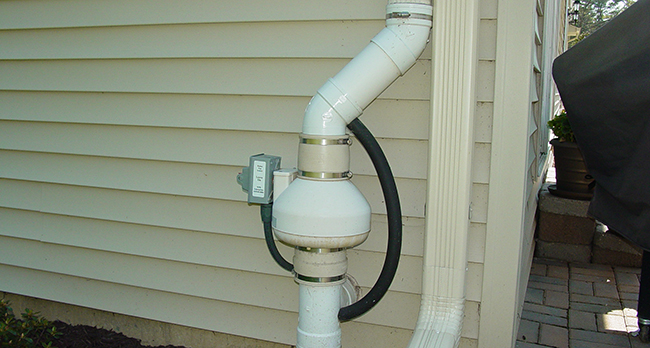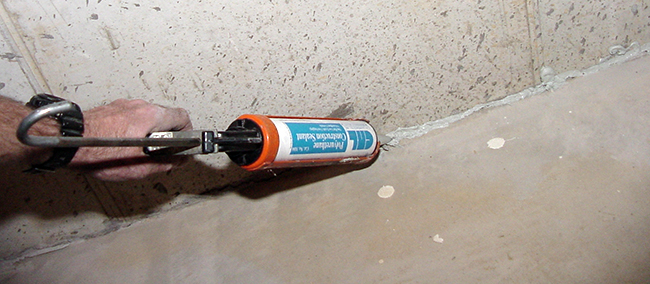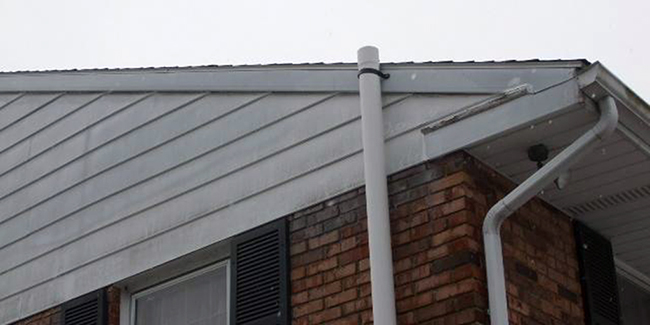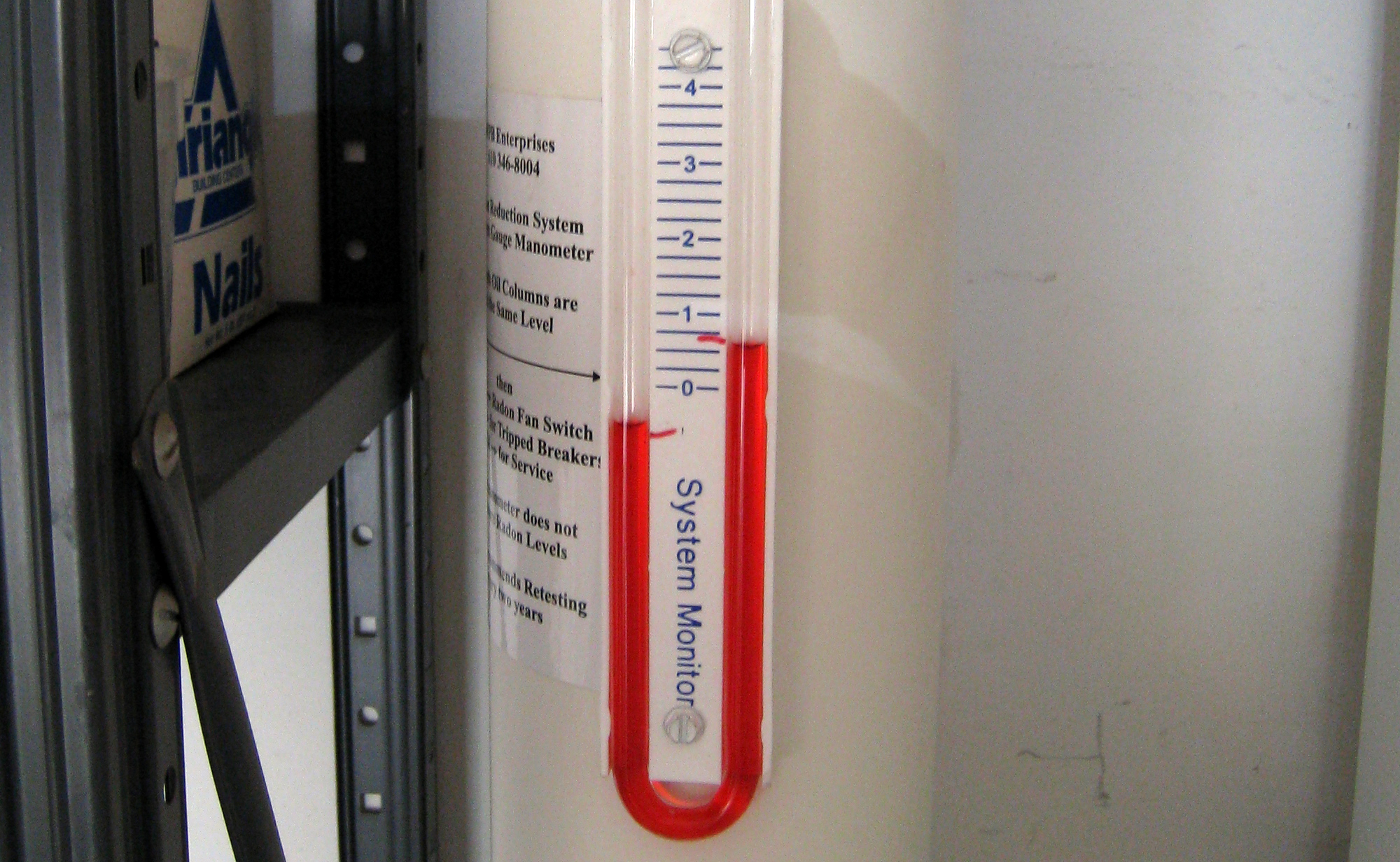The U.S. Environmental Protection Agency action level for radon is 4 pCi/L. Because of our geology, many homes in Pennsylvania have a considerably higher radon level. If a test of your home shows a level higher than the EPA action level, you should have a radon reduction system installed to protect yourself and your family from this radioactive gas, the second leading cause of lung cancer.
Here are a few things to be aware of and questions to ask your radon mitigation contractor when you’re getting a radon reduction system installed. If you have further questions about radon testing and reduction, reach out to the DEP Radon Program at email RA-EPBRPEnvPrt@pa.gov or phone 1.800.237.2366.
1. In Pennsylvania, radon gas mitigation contractors must be state certified. Certification is required for any person who repairs or alters a building for the purpose of radon reduction. A certified mitigator carries a photo ID badge with certification and expiration dates to reassure the homeowner of proper training and knowledge of mitigation standards in Pennsylvania. To find a certified mitigator, use our Radon Services Directory.
2. Get more than one estimate. As with any home improvement project, getting more than one estimate will help you be more informed. In Pennsylvania, the cost of installing a radon reduction system in a home generally ranges from $500 to $2,000, with an average of about $1,000. The price depends on the kind of system installed and the type and size of the home.

Today some new homes may be built with radon resistance features already installed, such as clean aggregate, piping below the slab, sealing of openings in the foundation, and an electrical box in the attic where the fan may be placed. Including these features in the construction of a new home may lessen the cost of having a radon reduction system installed afterward.
3. Ask the radon mitigation contractor whether they guarantee their system will lower the radon level to below 4 pCi/L. A post-installation radon mitigation test should always be performed no sooner than 24 hours after fan started and before thirty days after fan started. Be aware that the first attempt to reduce radon gas in your home may not always get the level to below 4 pCi/L. Some contractors guarantee this, and some don’t. If your contractor doesn’t, consider asking how much you could expect to pay for return visits to do additional work if they don’t get the radon concentration below 4 pCi/L the first time.
4. Ask what kind of sealants the contractor uses. Sealing is an important part of any radon reduction system. A durable caulk like urethane is recommended for floor cracks, floor-wall joints (if not already sealed), and around any PVC pipe penetrations through the floor that are part of the system.

Also, you’ll want to be sure your sump pit, even if it has a sump pump, is covered and then sealed with a silicone caulk. Silicone caulk is much easier to remove than urethane caulk in the event of an emergency, such as a sump pump failing, that requires you to regain access to the sump.
5. Make sure the radon fan is in the best possible location. For a system installed after the house has already been built, this will almost always be on the outside of the house. Sometimes, if radon system piping is installed during new construction the fan would be placed in the attic if the installation allows for all system piping to be inside the house.
Sometimes a fan is installed in a garage, and that’s fine, as long as there isn’t living space above the garage. The radon mitigation industry in Pennsylvania should be well aware of this requirement. You want to be sure you don’t have a fan installed in or beneath living space of the home, such as a basement or crawlspace.
6. The pipes must be configured to remove condensation. The system pipe configuration is important. Whether the system has one suction point, or many suction points, all pipes should be configured to allow any water from rain or condensation to flow down and drain beneath the slab. Horizontal pipe runs in a mitigation system should be sloped slightly downward so water can’t become trapped anywhere in the mitigation system. You can always put a level on top of your pipe to determine its pitch.
You also want horizontal pipe runs to be secured every six feet and vertical pipe runs to be secured at least every eight feet. Lastly, radon vent pipes need to be secured to the structure of the building! They should never be strapped to other pipes, appliances, or electrical wires.
7. The radon gas discharge point must be above roofline. This ensures the radon gas is exhausted above and away from the house and doesn’t come back into open windows or doors.

8. Radon reduction system maintenance is important, and easy to do. We often hear people say, “I don’t have radon. I have a radon mitigation system. It was there when I bought my home.” If there is a radon reduction system in your home, at some point there was elevated radon. It’s good to know what the elevated level was, and ensure your system is continuing to bring it down to below 4 pCi/liter.
Also, you’re then aware of what the level will start to go back up to in the event of an extended power outage or if the fan in the radon reduction system quits working. You might consider installing an additional audible alarm to notify you if the power goes out or the fan quits.
All radon reduction systems should have a micromanometer or U-tube containing colored (red or blue) liquid. You also want to occasionally look at this tube. It tells you whether air is flowing through the piping and the fan is still running. The levels on the two sides of liquid should be unequal.

When we get calls from homeowners saying that the U-tube is reading “zero,” or both lines of liquid are at the same level, we have two questions: Is your fan turned off? Is the circuit breaker turned off? This is the fix about 25 percent of the time. In most cases, though, the homeowner must contact the radon mitigation contractor who installed the system and ask them to check. If the contractor is no longer in business, we direct homeowners to the list of certified mitigators in our Radon Services Directory.
Sometimes, after years of use, the fan may need to be replaced. Unless under warranty, replacement fans cost approximately $250-$350.
9. Even with a radon reduction system in place, do a radon test every two years. This ensures that all parts of the mitigation system are functioning properly, and the system is keeping radon gas at the lowest level possible. Also, you should retest if you do any major structural changes to your home.
More helpful information:
The Pennsylvania Radon Mitigation Standards can be found here, under Forms and Technical Guidance.
The most recent updates to the standards can be found in the PA radon regulations, in Chapter 240.308.
The Radon Mitigation System Fact Sheet can be found here.